| IMPERIAL CLASSICAL ROME |
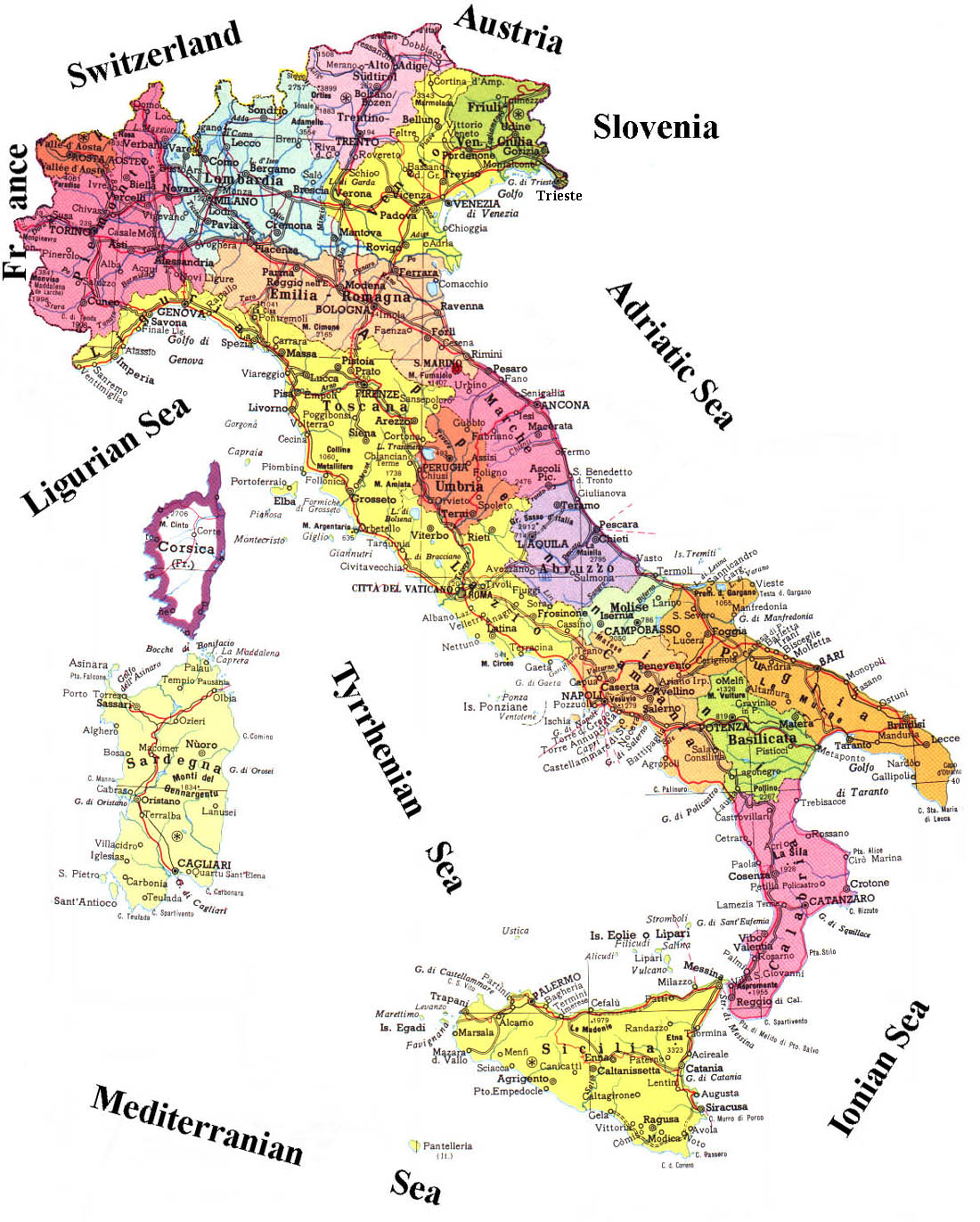 |
Map of USA
Population : 58,103,033 (July 2005 est) Median age: 41.77 years Fertility rate: 1.28 children/woman(04) Currency: Euro GDP per capita: PPP $28,300 (2005) Population below poverty line: 12% Labor force - by occupation: Agriculture NA Industry 28.8%, Services 69.1% Source : CIA Factbook |
 |
Flag of Italy
Italy became a nation-state in 1861 when the city-states of the peninsula, along with Sardinia and Sicily, were united under King Victor EMMANUEL II. An era of parliamentary government came to a close in the early 1920s when Benito MUSSOLINI established a Fascist dictatorship. His disastrous alliance with Nazi Germany led to Italy's defeat in World War II. A democratic republic replaced the monarchy in 1946 and economic revival followed. Italy was a charter member of NATO and the European Economic Community (EEC). It has been at the forefront of European economic and political unification, joining the Economic and Monetary Union in 1999. Persistent problems include illegal immigration, organized crime, corruption, high unemployment, sluggish economic growth, and the low incomes and technical standards of southern Italy compared with the prosperous north. |
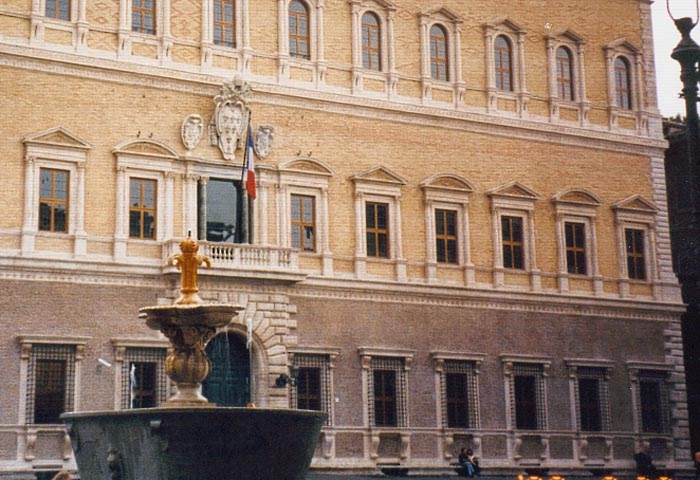 |
Modern Rome This is the French Embassy in Rome. |
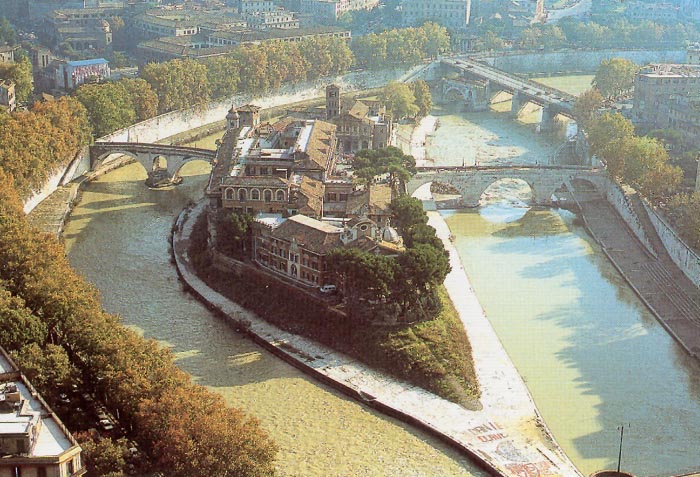 |
Modern Rome Isola tiberina (Tiber Island) - In ancient times this island had a large structure of white travertine at either end built to resemble the stern and prow of a ship. Since 293BC, when a temple was dedicated here to Aesculapius, the god of healing and protector against the plague, the island has been associated with the sick. There is sitll a hospital here. San Bartolomeo, the church in the island's central piazza, was built on the ruins of the Temple of Aesculapius in the 10th century. Its romanesque bell tower is a useful landmark, clearly visible from the banks of the Tiber. |
 |
Modern Rome Palazzo Venezia - One of the first Renaissance civic buildings in Rome, this palace has arched windows and doors that are so harmonious the facade was once attributed to the great Humanist architect Leon Battista Alberti. Palazzo Venezia was built in 1455 for the Venetian cardinal Pietro Barbo, who later became Pope Paul II. It was at times a papal residence, at other times the Venetian Embassy before passing into Austrian hands in 1797. Since 1916 it has belonged to the state. In the Fascist era Mussolini used it as his headquarters, addressing crowds from the balcony. the interior has first-class early Renaissance paintings. |
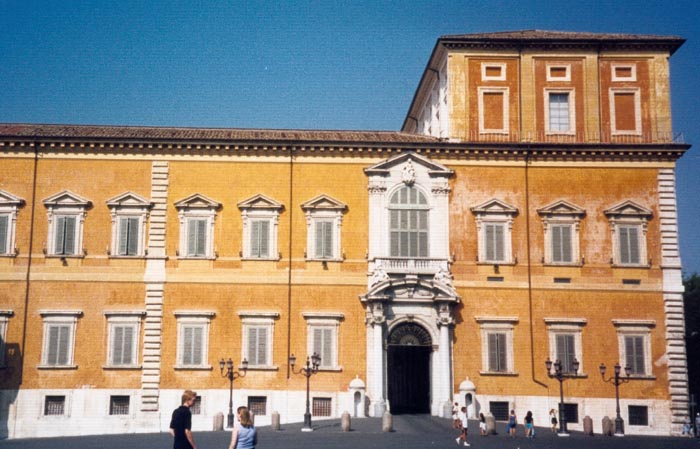 |
Modern Rome Palazzo del Quirinale - By the 1500s the Vatican had a reputation as an unhealthy location because of the high incidence of malaria, so Pope gregory XIII chose this site on the highest of rome's seven hills as a papal summer residence. Work began in 1574. It has 3 sides, with the fourth being open. Giving views of the city to the dome of St. peter's in the distance. Many great architects worked on the palace before it assumed its present form in the 1730s. |
 |
Modern Rome This is the Lateran Palace, resdience of the popes until 1309. It was rebuilt by Domenico Fontana in 1586. The area in front is the Piazza di San Giovanni in Laterano, and has an ancient obelisk and parts of Nero's Aquduct. The obelisk is on the left front of the photo. |
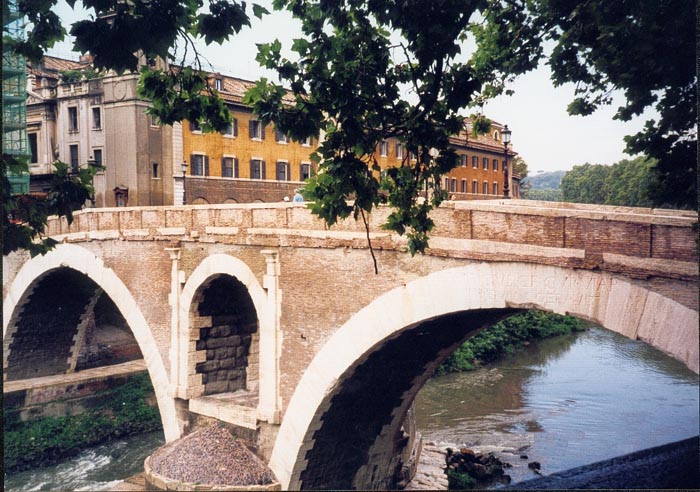 |
Modern Rome This is the Ponte Palatino - Palatine Bridge. |
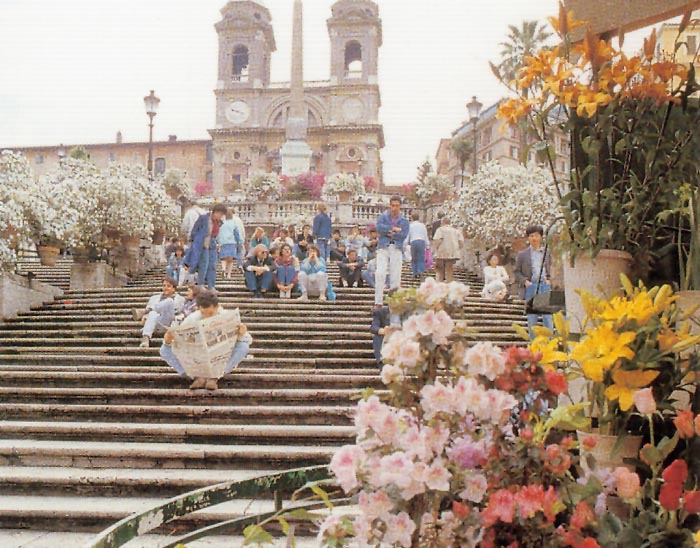 |
Modern Rome This is the spanis Steps- In the 17th century the French owners of trinita dei Monti wanted to link the church with the Piazza di Spagna with a set of steps. They planned to place an equestrian statue of King Louis XIV at the top. pope alexander VII Chigi was not happy. Then Italian architect, Francesco de Sanctis, produced a design that satisfied both the French and the Papacy. teh steps, completed in 1726 combine straight sections, curves and terraces to create one of the city's most dramatic and distinctive landmarks. The spanish steps today is a popular meeting point. |
 |
Modern Rome the Trevi Fountain - Nicola salvi's theatrical design for Rome's largest and most famous fountain was completed in 1762. The central figures are Neptune flanked by two Tritons. One struggles to master a unruly seahorse, the other leads a far more docile animals. these symbolize the two contrasting moods of the sea. The site originally marked the terminal of the Aqua Virgo aqueduct built in 19 BC. One of the first -story reliefs shows a young girl pointing to the spring from which the water flows. |